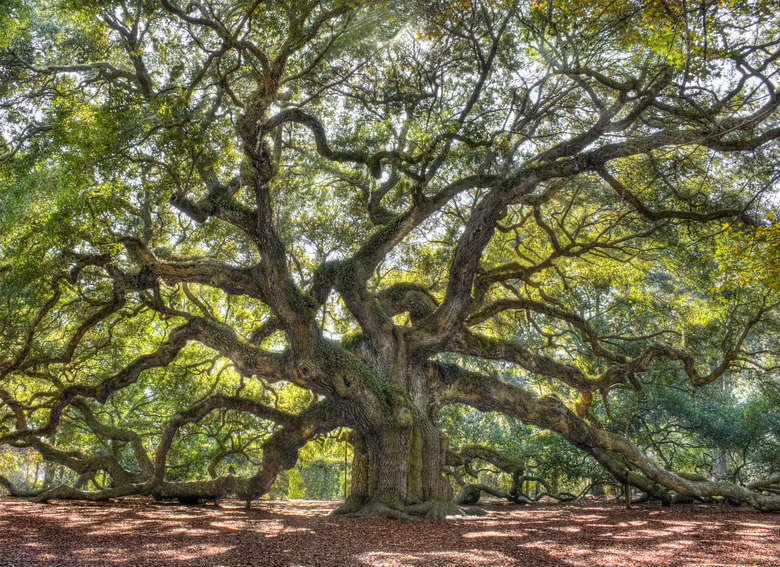Oak Trees With Moss Fungus
We may receive a commission on purchases made from links.
Homeowners who are lucky to have an oak tree (Quercus spp.) in their yard are often enamored by the tree's expansiveness and the bark's maturity. If you find yourself keeping track of any changes in your oak tree's characteristics and you happen to notice that the oak tree has moss fungus, it might not actually be moss or fungus. Most likely, a lichen is growing on your tree.
What Is a Lichen?
What Is a Lichen?
A lichen may look like a gray, green or yellow moss fungus, but it's neither moss nor fungus. It's not even a plant. Lichens are self-sufficient plantlike organisms that attach themselves to tree bark, shrubs and even wooden fences. Many of us may confuse them for moss or fungus, but they fall between fungi and algae.
Lichens are combinations of green algae and fungal tissue, and each lichen consists of one alga species plus one fungus. The alga, a microscopic green plant, makes food, while the fungus, a nongreen plant, supports both itself and the alga. A major pro about the lichen is that since it's self-sufficient, it's not taking any nutrients from your tree. It gets its nutrients from moisture and sunlight.
If you happen to see a lichen on your oak tree, know that it doesn't have any roots, so it's not burrowing into your oak tree. Although the lichen may look like moss and coexist well with moss, a way to differentiate the two is by its location: moss likes shady hideouts, while lichens love the sun.
Benefits of Lichens
Benefits of Lichens
The lichen is a natural air-quality indicator because it can absorb everything in the environment. Since lichens only thrive when air quality is clean, scientists use lichens to measure the air quality of different areas. Another advantage of lichens is that they can convert carbon dioxide to oxygen, and they can absorb pollutants.
Lichens also have antibiotic properties, and sometimes, companies use them as an ingredient in deodorant and other products. Deer love to eat lichens, and some birds like to use them in their nests.
Can Lichens Harm Oak Trees?
Can Lichens Harm Oak Trees?
Although lichens have many positive attributes, you have to monitor your oak tree's condition to make sure it isn't unhealthy or dying. Since lichens are not parasites, they're not taking nutrients from your oak tree, but lichens on an oak tree can sometimes be a sign that your tree's condition is declining. Although lichens may look pretty, they are rarely found on healthy trees.
Lichens will not harm your tree, but if your oak tree is starting to look unhealthy, you should contact a certified arborist, who will be able to better assess what is wrong because your tree could be dying due to pests or disease.
Should You Remove Lichens?
Should You Remove Lichens?
Since lichens are not harmful and can indicate that something else is harming your tree, lichen should never be removed from oak trees. Trying to get rid of them can actually cause more harm than good. One may think it's harmless to peel a lichen off an oak tree, but you can injure your oak tree's bark.
If you damage the bark, you will be providing diseases and pests easier access to your oak tree. For people who don't like the look of lichens, a certified arborist will be able to help you figure out if something is wrong with your tree and how to prevent lichens on other trees in your yard.
